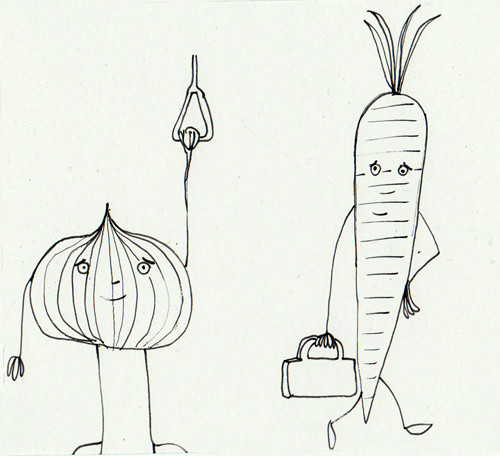People cop to having spirit animals. No one carves totem poles anymore but I do know a guy who was once so obsessed with lions that he sewed a frilly yellow felt mane along the hood of his favorite sweat-jacket. During that phase, at parties, he'd roar frequently, with the hood up and curled around his head. As for me, I'm not sure. A girlfriend once told me I reminded her of a "big, goofy bird." A year later, another described me as cat-like. Cats give me violent sneezing fits, and I'm indifferent to any fowl that hasn't been plucked and braised. In truth, I've never been particularly keen on spirit animals. Some folks realize theirs in meditative visions, and others take a Facebook quiz, but either way, the selection process is deeply flawed. I doubt any shamanistic traveler has journeyed through mystic pathways in search of animal power and encountered a yapping Pomeranian at the end of the line. The problem is obvious: we find human traits in animals both wild and domesticated so easily that seeing ourselves in their skins is no great stretch, and the tendency to telegraph our self-associations is in the end too powerful.
What about vegetables? Might we possess vegetable spirits as well as those of animals? Biologically we certainly have much less in common with them. The edible buds, bulbs, seeds, stems, roots, and leaves of plants, vegetables are inanimate and mute. They don't procreate or eat like us, show emotion, or play. Identifying with them in such a personal sense requires a significant suspension of disbelief. When I interviewed Eggplant Kohlrabi and Kale Daikon of the scintillating blog Weird Vegetables back in June, our conversation touched on the issue. We were discussing the polarizing black radish, a vegetable the two had described on their blog as being very "radish-y," meaning of course, that it epitomized, in their eyes, the pungent and peppery traits commonly associated with the radish diaspora. Spurred, I think, by the blog's frequent clever forays into anthropomorphism, I felt suddenly compelled to ask them if people could be "radish-y" too. The resulting dialogue chewed up the rest of the interview.
In an exchange I edited out of the final transcript, I shared with them the story of a friend from college. In college, I knew this guy -- a great guy, incidentally -- who did a self-help radio show on the student-run station. Ingeniously, the show wasn't about helping those calling in; it was about helping himself. Slighted friends and spurned lovers would get on the air and give him shit, and he, flustered and mortified, would beseech listeners for advice. Anyway, as I told Daikon and Kohlrabi, this fellow once told a pal of mine in a moment of ill-advised candor that she reminded him of an olive -- probably because she's dark-haired, dark-eyed, and a little bitter-seeming until you get to know her. At the time, my friend hated the taste of olives, and recoiled at the fairly terrifying prospect of resembling and evoking something she despised.

Some vegetables, like potatoes, for example, with their nubs and pits, can sometimes look like people, especially faces. Superficially, people may also take on vaguely vegetal characteristics. With a little imagination and some squinting, the morning commute reveals a lush farm stand of walking, talking veggies: dour wrinkled turnips lugging briefcases, posh little shallots dabbing away with eyeliner, and lanky carrots bopping along to iPods, their plumes of hair flopping delicately back and forth. The possibilities multiply as you dig deeper, drawing arbitrary parallels between human personality traits and properties of vegetables. There is no universal methodology for this kind of cross-kingdom organization, which is naturally part of the fun. When you look at yourself, and then into yourself, and then out again, across the mist-mottled expanse of reds, greens, purples, and browns in a grocery store produce section, or perhaps the big rough bins of a friendly farmer's market purveyor, what suits you best?